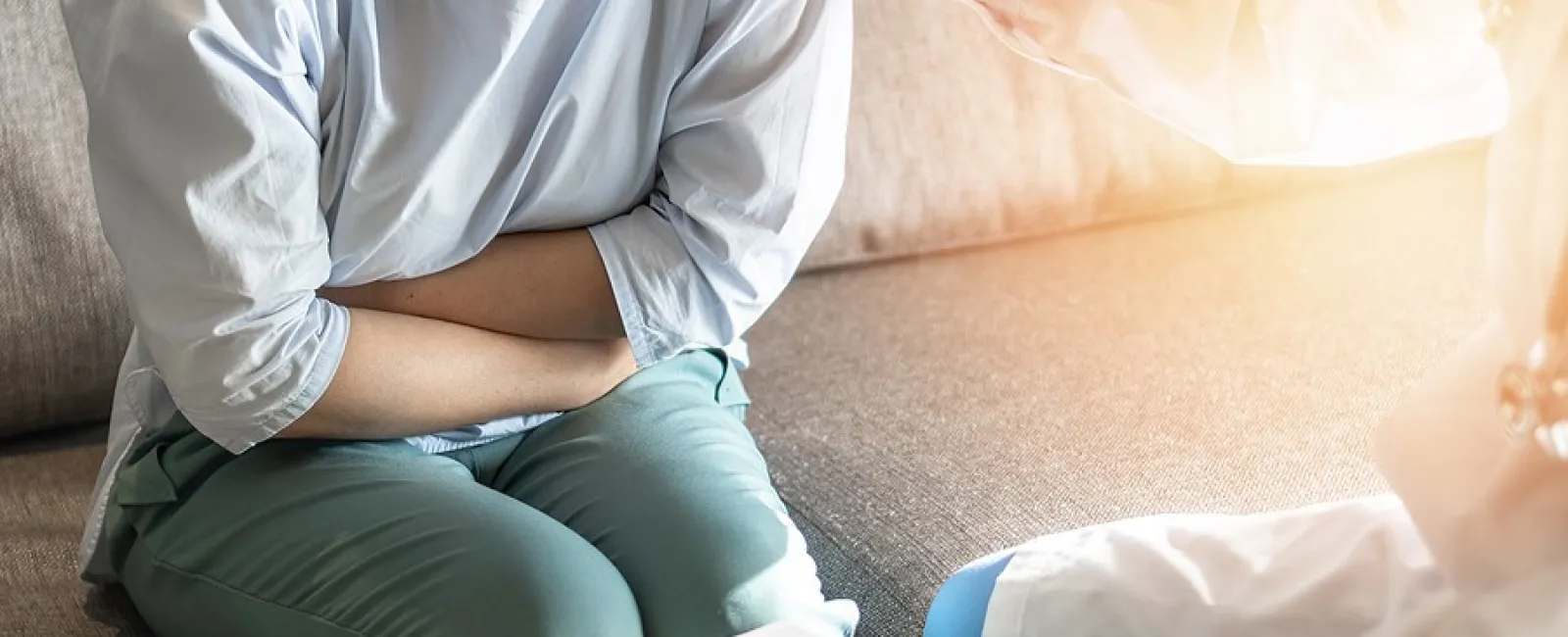With an estimated one in ten women experiencing adenomyosis, this is a fairly common condition of the uterus that can lead to debilitating pain. While we don’t know why this happens, it’s important to understand this condition, its common misdiagnoses and how one can deal with the chronic pain on a day-to-day basis. This manageable condition can be a lot easier to deal with when armed with some awareness!
What is adenomyosis?
Adenomyosis is a condition of the uterus where the tissue that lines the uterus grows into the muscle wall of the uterus, causing cramps, pain, bloating and pressure. This displaced tissue will still thicken and bleed during each menstrual cycle, enlarging the uterus in one spot or throughout. Because it’s one of several conditions affecting the uterus, it can be sometimes hard to diagnose.
Pain will be localized in one spot or throughout the uterus for those experiencing adenomyosis. Uterus pain can be debilitating, but this condition is considered to be benign and not life-threatening.
Adenomyosis Symptoms
- Heavy periods
- Severe cramping
- Sharp, stabbing pelvic pain during menstruation
- Chronic pelvic pain
- Painful intercourse
- Lower abdominal pressure and bloating
- Spotting between your periods
- Longer periods than normal
Adenomyosis pain is typically described as sharp or knife-like, and centers around the uterus itself, unlike other diseases that affect the uterine lining. In severe cases, this condition can lead to infertility.
Adenomyosis Causes
This disease is most common for women in their 50s or during menopause. While no one really knows the direct cause, some say that adenomyosis results from past uterine surgeries or inflammation during childbirth. Others have suggested that some hormones can trigger the condition.
Adenomyosis Treatment
Basically, there are three options for treating this common condition: anti-inflammatory drugs (like ibuprofen), hormone drugs (like certain birth controls) and surgery (or specifically a hysterectomy). Removing your uterus is only recommended in very severe cases.
How can I tell if I have adenomyosis vs. endometriosis?
Here are the main differences:
- Endometriosis involves endometrial cells growing outside of the uterus.
- Adenomyosis involves the endometrial cells growing inside of the uterine wall.
- While estimates range wildly, adenomyosis is considered to be more common.
- If your symptoms include pain higher on your belly, painful bowel movements, painful urination, fatigue or nausea, you’re likely experiencing the effects of endometriosis.
- If your symptoms include abnormal bleeding, an enlarged uterus or infertility, the condition is likely adenomyosis.
- Adenomyosis can often be diagnosed with an ultrasound, and this is much harder to do for endometriosis, which typically requires surgery to fully diagnose.
- In terms of treatment, both of these conditions are manageable, but surgery may be needed. For adenomyosis, this includes a hysterectomy. Typically, the surgery for endometriosis is more exploratory and may not include a hysterectomy.
Some women have the unfortunate experience of having endometriosis and adenomyosis both at the same time! In fact, a small study found that 42.3% of women with adenomyosis also had endometriosis.
How can I tell if I have adenomyosis vs. fibroids?
Most commonly, adenomyosis is actually misdiagnosed for uterine fibroids, which are benign tumors that don’t grow or shrink with your period.
- Uterine fibroids are muscular tumors.
- Adenomyosis involves the endometrial cells in the muscular uterine wall.
- Many symptoms are in common with both conditions, but frequent urination and pregnancy complications come with fibroids.
- Adenomyosis is often accompanied by sharp pelvic pain and leg pain.
- Uterine fibroids don’t necessarily ebb in pain or bloating as much.
If you believe you may have adenomyosis, ultrasounds and MRIs can help to diagnose this condition following a physical exam. Adenomyosis, while not serious on its own, has several symptoms in common with more serious diseases, so it’s best to check in with a doctor when experiencing severe pain. Treatments are available and managing these symptoms can get easier over time!
